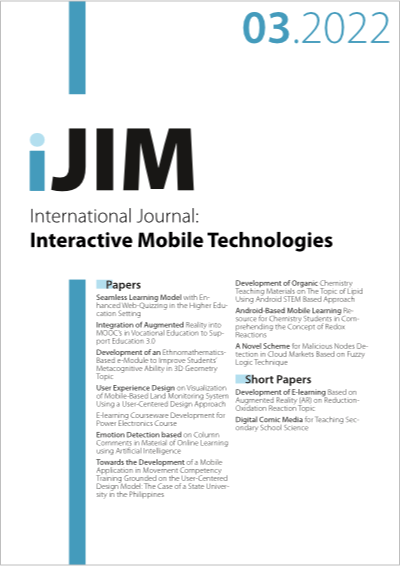Development of an Ethnomathematics-Based e-Module to Improve Students’ Metacognitive Ability in 3D Geometry Topic
DOI:
https://doi.org/10.3991/ijim.v16i03.24949Keywords:
E-Module, ethnomathematics, problem-solving, building spaceAbstract
Since the Covid 19 Pandemic by the end of 2020, the learning process has shifted from school to online home-based- learning. Several technologies are applied for enabling students’ participation. Technology-based learning needs to be designed to be attractive and integrated with local culture. The present study developed a valid, practical, and effective Sasak ethnomathematics based- e-Module. The e-Module was mainly designed to improve students' metacognitive abilities. The study used development research using a 4D development model consisting of four categories: defining, designing, developing, and disseminating. The research was conducted in one of the elementary schools in West Lombok. Ten students of grade five and 30 students of grade six were selected for large-scale trials. The validity test showed that the ethnomathematics-based- e-Module was highly feasible to be used as a learning resource with an average score of 3.65. The analysis of students’ responses from the questionnaire showed that the E-Modul fell into the practical category with a practicality percentage of 89%. The results of data analysis using independent sample T-Test showed that the T-test value was 0.00 < 0.05, thus the results of the study revealed a significant difference. Overall, the ethnomathematics-based- e-Module was valid, practical, and effective for improving students' metacognitive abilities on spatial material. The students can access the e-Module via smartphones or laptops, allowing them to remotely without time restrictions
Downloads
Published
How to Cite
Issue
Section
License
Copyright (c) 2022 Intan Dwi Hastuti, Sukron Fujiaturrahman, Sutarto Sutarto

This work is licensed under a Creative Commons Attribution 4.0 International License.



